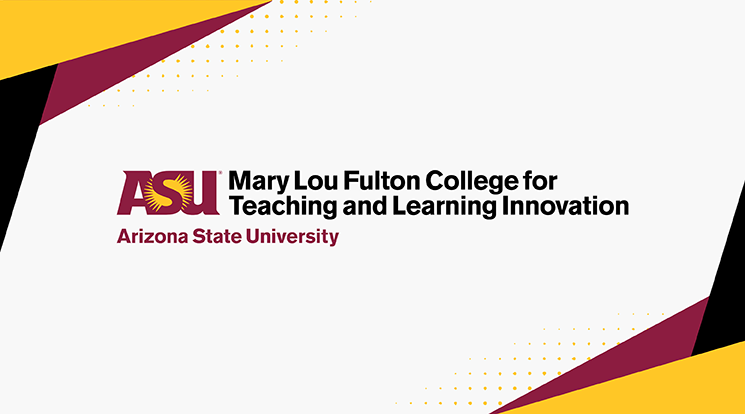Wanted: a new breed of leader for a new kind of education workforce

The definition of insanity is doing the same thing over and over and expecting different results. Some may say what we’re doing with education is insane. Here in the United States, we don’t have the education workforce we require and, yet, we keep using the same model that was designed in the early 20th century.
One could even argue that preservice teacher education is no longer serving future teachers adequately because the job is untenable. That’s why, according to Brent Maddin, executive director, educator workforce initiatives for ASU's Mary Lou Fulton Teachers College, we must redesign the education profession and how we prepare people for it.
“Imagine,” says Maddin, “an educator workforce that creates a pathway for more positions and is no longer just a single teacher in a single classroom, but rather a team of educators, including managing teachers.”
Maddin explains that, although the term managing teachers is still “up in the air,” the role is quite clear. He describes it not as a teacher or a principal but as something in between, specifically created for educators who don’t want to leave the classroom but want more responsibility, leadership opportunities and higher pay. In this new vision, the role of principal must also change.
What has been asked of principals has drastically changed over the years, says Carl Hermanns, clinical associate professor, division of educational leadership and innovation at Mary Lou Fulton Teachers College. “For many years the role was mainly operational: to make the bus run on time, implement the bell schedule, ensure the building is in good shape. But 20 or 30 years ago, the discourse began to change, and principals were asked to be instructional leaders with a main focus on ensuring that instruction was effective and children were learning.”
Maddin echoes Hermanns, saying that in this new workforce, the principal role will have to stretch even further, “Principals will need to think of the strengths of individual educators, assemble teams of educators, forge community partnerships, budget at the district and school level, increase personalization for students, among other responsibilities.”
That said, this concept is still in the early stages, Maddin points out. “We are meeting with 15 school districts around the Phoenix metro area on a monthly basis to help craft what the emerging roles within their systems will look like.” Maddin is certain the people in these roles will need additional skill sets. “I could imagine specializations within the iLeadAZ Principal Preparation Pathway program for these managing teacher roles, with a lot of the responsibilities a principal would have," Maddin says.
Hermanns says, “It has long been recognized that principals can’t be both instructional leaders and operational leaders by themselves. The job is too big and so principals have assistant principals, unless the school is very small, and generally create leadership teams in order to distribute leadership.”
“The changes in workforce design that Mary Lou Fulton Teachers College is envisioning could provide an opportunity for principals to think differently and more creatively about how they can staff their schools in ways that provide various configurations of teaching teams. This kind of reconceptualization of the teacher workforce could offer real promise for transforming schools,” says Hermanns.
Maddin adds that not only the roles of principals and school leaders have to change: the way students learn also must change. “Instead of placing a teacher in the middle and surrounding them with 30 kids, place 120 kids in the middle and surround them with a team of four to eight educators. We need to cater to the specific needs of a child.” Maddin envisions schools in which personalized instruction for children relieves the pressure on teachers being experts in everything.
In the ongoing conversations Maddin is having with Phoenix-area school districts, he says, “Our partners in these districts are intrapreneurial leaders and have raised their hands very high to be a part of this. A lot of them have begun to experiment with variations of this model already.”
There are many more conversations that need to happen among educators, colleges of education and community leaders,” Maddin says. “We are eager to have them. Close partnerships will help us make something truly great here and ultimately improve the experience that leaders, teachers and learners have in our schools.”
Ready to lead the new workforce and help us reinvent education? Learn more about our Master of Education in Educational Leadership and hear from alumni: